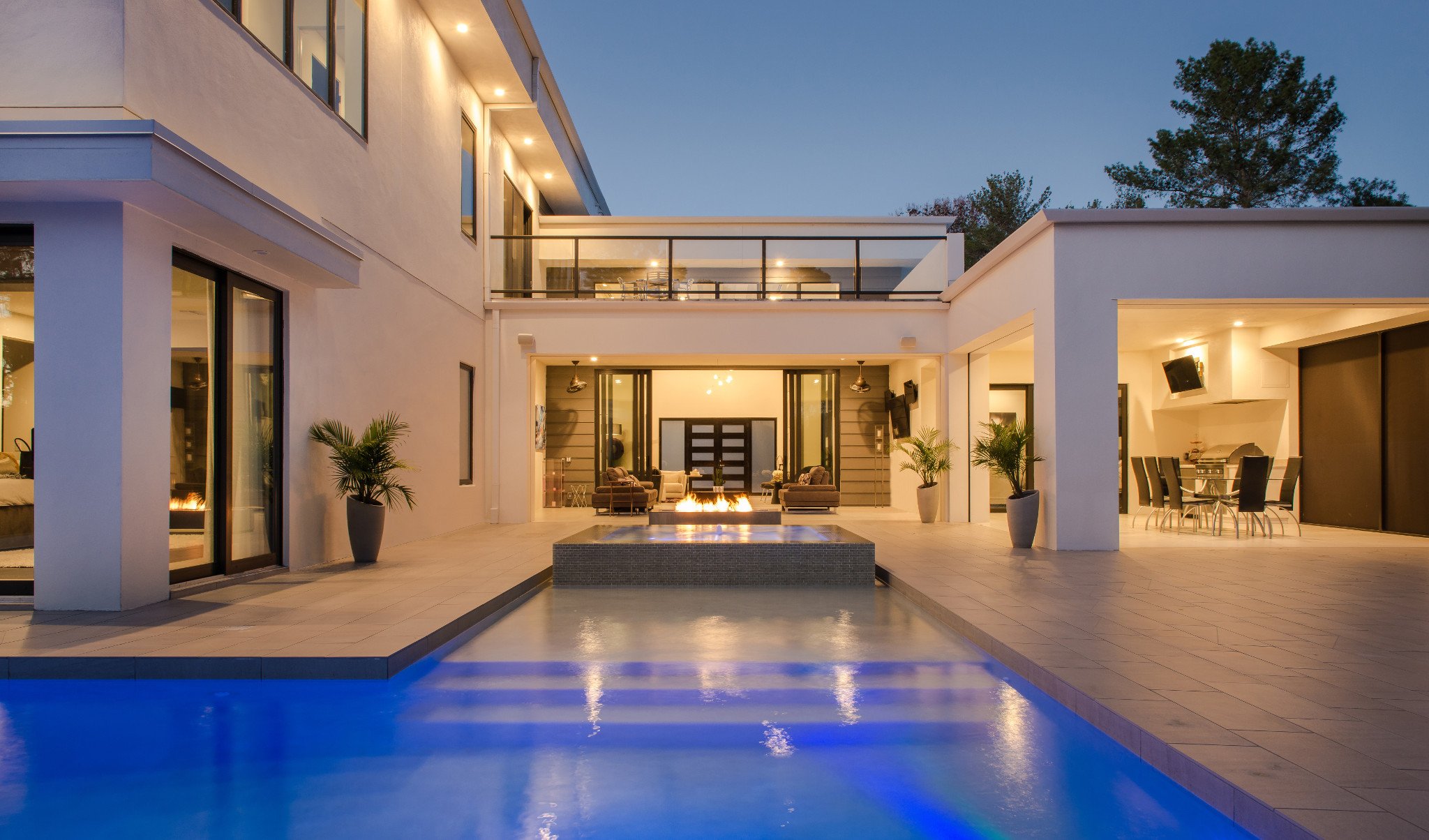Best Practices in High‑End Residential Lighting Control Systems Pt. 1: Centralized vs. Decentralized Lighting Systems
The Art and Science of Lighting Control in Luxury Homes
High-end homes often use advanced lighting control systems that can manage dozens or even hundreds of light circuits. This research by Home Technology Experts explores how to program centralized vs. decentralized lighting systems (focusing on brands like Lutron, Crestron, Control4, Savant, and Vantage), the evolution of lighting keypads from crowded multi-button panels to sleek modern designs, and the trade-offs between aesthetics and functionality.
We also examine common challenges with custom-engraved keypad buttons, especially delays from homeowner indecision or dealer oversight, and look at technological solutions (like virtual keypad previews and automated engraving tools) that can streamline the process. Throughout, we include insights from industry experts and real-world anecdotes to guide homeowners, designers, architects, and builders involved in luxury residential projects.
This is a three part series with sources listed in the final post.
Centralized vs. Decentralized Lighting Systems
In high-end homes, lighting control systems generally fall into two categories:
Centralized (Panelized) Systems
All the load wires from lighting circuits run to centrally located dimming panels (often in utility rooms), and low-voltage keypads on the walls send signals to those panels. There are no traditional high-voltage dimmers in the rooms – just keypads or touchscreens. For example, Lutron’s HomeWorks system is a classic centralized solution: lights are dimmed via remote modules in a panel, and each room uses keypads instead of multiple switches. Crestron and Vantage similarly offer centralized lighting panels that hardwire all circuits to dimmer modules enabling any button to control any light in the house. This design greatly reduces “wall acne” (banks of switches on the wall) by replacing them with a single elegant keypad that can control many lights or scenes * .
Decentralized (Distributed) Systems
Individual smart dimmers or switches are installed in place of each conventional light switch throughout the house. These communicate with a central processor or hub but can also often work independently. Each switch typically controls a single lighting load (or multiple loads), like in a traditional setup, though some keypads can be configured to control multiple scenes. Systems like Lutron’s RadioRA3 or Control4’s wireless lighting use this distributed approach – each smart dimmer is an independent device on the network. This is easier for retrofits or smaller projects as each room’s lighting can be upgraded piece by piece without running all wires to a central location * .
Many large residences actually use a hybrid approach: critical areas use centralized panels with multi-load keypads to minimize wall clutter in public spaces, while less critical or already finished areas use localized dimmers for simplicity * . The choice often depends on the project scope, budget, and whether it’s new construction or a retrofit. From a homeowner or designer perspective: centralized systems offer a very clean look and can handle large estates (they “offer maximum scalability” for anything from a city apartment to a sprawling estate, whereas decentralized systems may be more practical for smaller homes or incremental upgrades.
Best practices for programming each type:
Plan Early with the Team
In luxury projects, it’s crucial to involve the technology integrator (and often a lighting designer) early in the design phase to decide on the control system type and keypad locations. This affects wiring needs, wall space for keypads, and even millwork (for example, ensuring there’s a slot for a keypad in a marble wall before the marble is cut) * . Expert lighting designers note that identifying the control method and even drafting the button engraving early provides clarity on how the system will function, and helps communicate requirements to architects and electricians * . Matthew Tirschwell, a veteran lighting designer, emphasizes working through the user interface design (including deciding keypad layouts and labels) during design development. By doing so, “there’s a clear understanding of what we need that user interface to do and what programming directives to give the integrator” * .
Centralized System Programming
With panelized systems (e.g. Lutron HomeWorks, Crestron Lighting), one best practice is to create lighting “scenes” that tie together multiple circuits, since a single keypad button can easily trigger many loads at once. For instance, a keypad at the front door might have an “All Off” button that ensures every light in the house is off when you leave * .
Scenes are the heart of centralized lighting programming – rather than toggling one light per button, each button is typically programmed for a scene or mood (entertaining, dining, relaxation, etc.). Integrators should work with homeowners to define a handful of core scenes per area. Keep labeling intuitive (more on this later in the engraving section) so it’s clear what each scene means.
Additionally, because centralized keypads depend on the processor, ensure redundancies and fail-safes are in place – for example, Lutron emphasizes the rock-solid reliability of wired keypads and panels, noting that while wireless is effective, “nothing can replace the tried and true results of a centralized system using dimming panels hardwired to local keypads” (especially with backup processors or power supplies for critical loads).
Decentralized System Programming
In distributed setups (like many Control4 or Savant installations), each smart dimmer can still be part of scenes, but you might also allow some local control functionality on multi-button keypads. Best practice is to keep the user experience consistent: even though each device is separate, program the system so that, for example, a double-tap on any light switch might turn off the whole room, or the top button on any multi-button keypad triggers that room’s “On” scene. Unlike panelized systems, if the central controller goes down, decentralized switches usually still operate their local load (a fail-safe advantage).
Pro tip for integrators: try to mimic the simplicity of centralized systems by grouping controls. In high-traffic rooms, replace banks of 3-4 separate dimmers with one smart keypad that triggers scenes for all those lights * – most major brands offer such keypads even in wireless form. This gives a similar user experience to a wired panel system. Finally, ensure all devices are on a robust network (mesh or wired) to avoid delays; homeowners will notice if there’s a lag when pressing a wireless switch.
Integration and Flexibility
All the brands mentioned (Lutron, Crestron, Control4, Savant, Vantage) can integrate lighting with other systems (shades, HVAC, security). A programming best practice is to leverage that integration without complicating the keypad. For example, one keypad button labeled “Goodnight” might not only turn lights off but also lower shades and set back the thermostat – one-press convenience. However, avoid trying to put too much direct control (like individual HVAC or music controls) on a lighting keypad unless the client specifically wants that; it can confuse users. Instead, use the home automation touch panels or apps for complex controls, and let the wall keypad stay focused on the core lighting/shading scenes that room needs.
As one industry saying goes, “it is smarter to provide fewer, regularly used functions on a well thought-out keypad than to bamboozle the user with something that looks like the flight deck of a 747” * . This means prioritize the most important scenes or functions for quick access, and leave the rest to secondary interfaces.
Testing and Client Involvement
Once initial programming is done, a best practice is to do a walkthrough with the homeowner (and designer/builder) room by room, often in the evening, to fine-tune scene levels. For example, what does “Relax” look like in the living room vs. the bathroom? Adjust dimming levels live and update the programming so that when the system is commissioned, those scenes feel just right * . Having key stakeholders experience the lighting scenes before finalizing labels can also help them decide on engraving (e.g. maybe what they thought would be “Movie” scene is better labeled “Family Time” after trying it). This collaborative tuning builds confidence that the programmed scenes truly match the homeowner’s lifestyle.
In summary, centralized systems excel in large custom homes for their clean aesthetics and scalable control, while decentralized systems offer an easier upgrade path and inherent redundancy. But either can fail to delight if not programmed with the end-user in mind. Keeping the control simple, intuitive, and consistent, and planning the system layout early (with all trades on board), are key to a successful outcome.
To continue reading click the links below or to read in full go to our Hamptons Lighting Design Blog here.
Interested in learning more for your home or business? Connect with us below!

